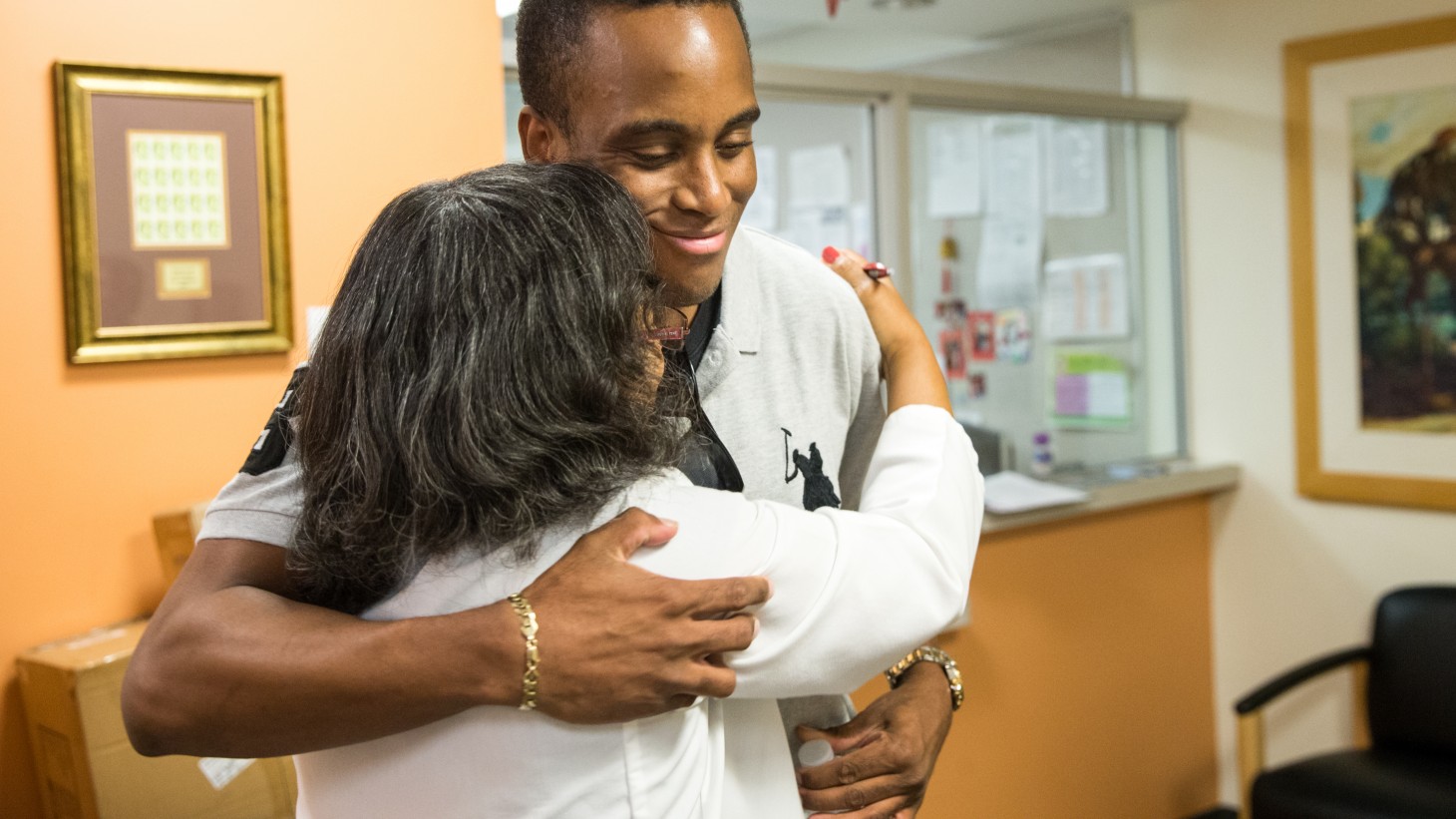Hank Winter 2016
See the whole issueCreating a Safety Net for Sickle Cell Patients

Brandon Johnson, a Kaiser Permanente member, gives Shirley Brown, RN, a member of UNAC/UHCP, a grateful hug.
Team approach helps members live full lives
Brandon Johnson was close to giving up on his dream of becoming an X-ray technician.
Born with sickle cell disease, a genetic blood disorder that primarily affects African-Americans, the 35-year-old Southern California man was forced to drop out of school for semesters at a time.
But thanks to the sickle cell care team at the Inglewood Medical Offices, Johnson is now on medication that reduces complications. Last fall, he was able to complete his studies, and he has started looking for a radiology job.
“They got me on a plan to keep me out of the hospital,” says Johnson, who drives 60 miles one way from his Riverside home to see his doctor in Inglewood, even though other providers are closer. “If I didn’t have my health, I wouldn’t be where I am today.”
约翰逊的成功对于5级团队来说并不罕见。该团队由医生、管理人员和员工组成,为南加州近500名镰状细胞病患者提供个性化护理。该地区约有300名成年患者直接接受该团队的治疗。这一方法奏效了——在过去一年中,300名患者中只有5人需要经常住院和急诊。
“Our goal is to keep sickle cell patients out of the hospital by giving them the care they need,” says Pippa Stewart, Inglewood’s department administrator.
Stigmatized as drug addicts
Nationwide, about 70,000 people have sickle cell disease, which can cause chronic anemia, acute pain, infections and stroke. Although most are African-American, the disease also affects people of Indian, Middle Eastern, Hispanic and Mediterranean heritage. Patients often get stigmatized as drug addicts when they ask for narcotics to deal with their pain.
The current UBT grew out of a team that was established in 1999; before that, there was no comprehensive treatment program for KP’s sickle cell patients.
“Ninety percent of patients were getting their primary care in the emergency room,” says Shirley Brown, RN, a UNAC/UHCP member and the team’s care manager. Patients saw as many as 17 doctors as they went from appointment to appointment.
Now, the 12-member UBT—which includes four physicians, two registered nurses, a physician assistant, a pharmacist and a social worker—helps patients control symptoms by offering pain management care, providing resources such as a case manager, and urging them to keep appointments, which help minimize visits to the emergency room and hospital.
团队成员与护理该地区剩余200名患者的KP提供者进行协调和帮助培训。去年秋天,布朗帮助组织了一场面向该地区70名注册护士的会议。医学博士Osbourne Blake是一名内科医生,也是该团队的首席医生,他定期向其他医生提供最新情况。“我们正努力让每个人都站在同一战线上,”布雷克博士说。最近的一项改革测试集中在减少病人错过预约的数量上。三个月来,布朗和一位同事每天都给病人打电话,提醒他们即将到来的探访。电话帮助。该团队的“不赴约率”从2015年5月的20%下降到2015年8月的14%。
Dramatic improvement
“They all know you personally,” says Ryan Hull, a 27-year-old TV production assistant and film student. A few short years ago, he suffered frequent crises that required immediate medical attention. After he and his physician co-created a pain management program, his health improved dramatically.
“They did everything they could to find out what regimen works for me,” Hull says of staff members, who greet him by first name and offer walk-in appointments to accommodate his sometimes unpredictable schedule. “They figured out the perfect way to treat me.”
